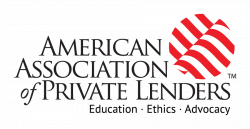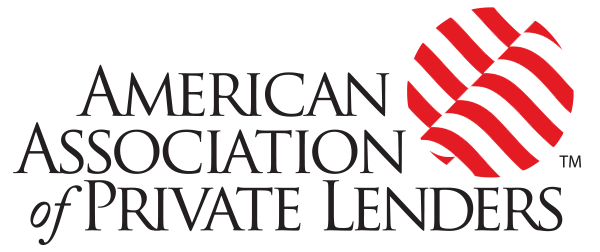Stop lawsuits before they start by putting every fee change in writing.
Principled lenders occasionally find themselves navigating ethical gray areas—not through malice, but through oversight, ambiguity, or the breakneck pace of deal flow. As compliance demands continue to evolve and competition intensifies, it becomes easier than ever to unwittingly stray from ethical commitments you agreed to uphold as an AAPL member.
Some standards are harder to violate unintentionally—few members set out to deceive borrowers or defraud investors. But others can trip up even well-intentioned professionals.
One of the most commonly and inadvertently breached standards is the duty to clearly disclose all fees and changes in writing. Let’s examine that ethical standard, the ripple effects of such a lapse, and outline the best practices, checks, and corrective measures to protect both your operation and the industry as a whole.
Where Things Go ”Pear Shaped”
You’re in the middle of a high-speed bridge loan transaction. The borrower is in a pinch, the timeline is tight, and new information is coming in by the hour. You’ve quoted an interest rate, outlined fees, and disclosed the usual closing costs. But then title throws in a curveball, or the borrower’s entity changes, or a broker wants their fee adjusted at the eleventh hour. Somewhere along the line, something material shifts in the deal economics.
You relay the change in a call or a quick email, but the deal still closes. Everyone signs. Everyone gets funded. And yet, you may have just violated AAPL’s Code of Ethics.
The relevant provision?
“Members shall take reasonable steps to promptly inform customers in writing of fees and costs associated with the transaction, including any changes therein.”
That’s not optional. In the current environment—where rising rates, increased borrower defaults, and market volatility are driving more amendments, re-trades, and deal pivots than ever before—it’s also one of the easiest standards to slip past you.
The Ethical Violation in Focus
Failing to document and disclose changes to costs in writing, even when the borrower verbally agrees, undercuts the transparency and trust that define ethical lending. It violates both the letter and the spirit of your obligation under AAPL’s Code of Ethics. Further, many states codify a general prohibition of “deceptive practices,” which may also open the door to claims under consumer protection statutes (e.g. California Business and Professions Code § 17200, New York General Business Law § 349, Florida Statutes § 501.201 et seq.). These allegations of unfair business practices may result in rescission rights in extreme cases.
You might think you’re safe because the borrower signed the loan docs. But if the final terms differed materially from the initial quote, and those changes weren’t documented in writing ahead of closing, you’re skating on thin ice. Who gets to decide if the difference was “material?” It might not be you.
Trust, Lawsuits, and Industry Reputation
Here’s the blunt truth: Private lending still fights an uphill battle against outdated stereotypes (hard money sharks, bait-and-switch tactics, lender-owned foreclosures). Whether those perceptions are fair or not, the onus is on you to operate in a way that holds up to scrutiny. Ethical lapses, intentional or not, feed the narrative that private lenders are opportunistic and unregulated.
On a practical level, lack of written disclosures invites litigation. Borrowers with buyer’s remorse (especially defaulting ones) have weaponized this gap in documentation. Plaintiffs’ lawyers know it’s often easier to allege fraud or breach of contract when a lender can’t produce a signed disclosure of revised costs.
More broadly, ethical missteps—particularly ones tied to money—erode borrower confidence and attract unwanted attention from regulators. With many state regulators — including California’s Department of Financial Protection and Innovation (DFPI) and the Colorado Division of Securities—increasing their focus on non-bank lenders and consumer litigation on the rise, you can’t afford the exposure.
How to Spot the Gaps
Here’s where you take a hard look in the mirror. Conducting a self-audit now can save you a demand letter, or worse, down the line. Start by asking yourself some tough questions. Do you have a standardized process for disclosing all fees and changes in writing, and is every disclosure documented, timestamped, and included in the file? Are your brokers and processors trained to flag fee or term changes so updated disclosures are issued on time? Or is your team relying on verbal or email communication that doesn’t make its way into a formal disclosure form? Finally, are you relying on a single “initial terms” document without consistently issuing updated ones?
If you answered “no” or “I’m not sure” to any of the above, you’re exposed.
Best Practices to Stay Compliant
Compliance doesn’t have to slow you down; it just has to be built into your systems. Here’s how to structure your operations to prevent ethical violations.
Have the Borrower Sign Updated Term Sheets. Whether you use a term sheet, letter of intent, or some other form of terms disclosure, promptly obtain the borrower’s signature to any updated term sheet as the terms change.
Centralize Documentation. Use a secure document management system to store all signed disclosures and change forms in one place. Ensure version control is part of the process.
Set a Trigger Process. Train your loan processors to flag (or have it automated) any economic changes before closing. Make the disclosure requirement part of your closing checklist.
Use E-sign Platforms for Speed. Don’t delay deals for wet signatures. Use DocuSign or another compliant platform to ensure borrowers formally acknowledge all cost revisions.
Audit Files Post-Close. Perform monthly or quarterly audits of recently closed deals. Look specifically for last-minute changes in terms and whether they were properly disclosed and signed.
Involve Legal Early. If your borrower is under stress or pushing back on terms, run the issue by counsel before finalizing a change. This not only protects your ethics—it protects your enforceability.
How to Make It Right When You Slip
Mistakes happen. The issue isn’t whether you’re perfect—it’s how you respond.
If you close a loan and realize post-closing you failed to provide a proper written disclosure of revised fees, act fast.
Document the Timeline Immediately. Reconstruct the events: when the change occurred, how it was communicated, and whether there’s any written evidence (e.g., email) of the borrower’s acknowledgment.
Send a Retroactive Disclosure with a Memo. While not a fix-all, sending a formal disclosure—even post-close—helps demonstrate transparency. Include a cover memo acknowledging the oversight.
Offer a Concession if Warranted. If the borrower is aggrieved and the discrepancy is material, consider offering a small credit or adjustment. A $1,000 concession now may prevent a $250,000 lawsuit later.
Update Your Internal Processes. Log the failure, identify what went wrong operationally, and update your process to ensure it doesn’t happen again. This not only mitigates liability—it creates an audit trail of continuous improvement.
Your Reputation Shapes Our Industry
Ethical lending isn’t about avoiding lawsuits. It’s about earning trust, reinforcing your professionalism, and elevating your industry. As a member of AAPL, your reputation reflects on all of us. That’s why a commitment to written, timely, and transparent disclosures isn’t just a best practice—it’s a professional obligation.
The good news? The fix is straightforward. The discipline is teachable. And the payoff is a stronger, safer, and more sustainable lending business—one that borrowers respect, courts uphold, and regulators leave alone.
Stay sharp. Stay ethical. And don’t let a sloppy process tarnish a strong deal.











Leave A Comment